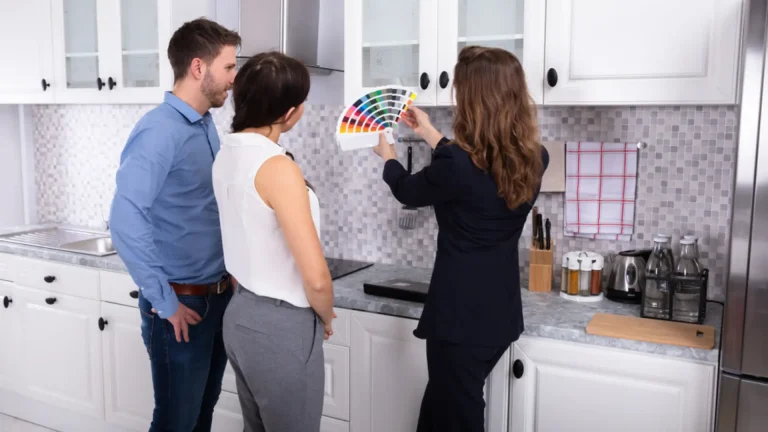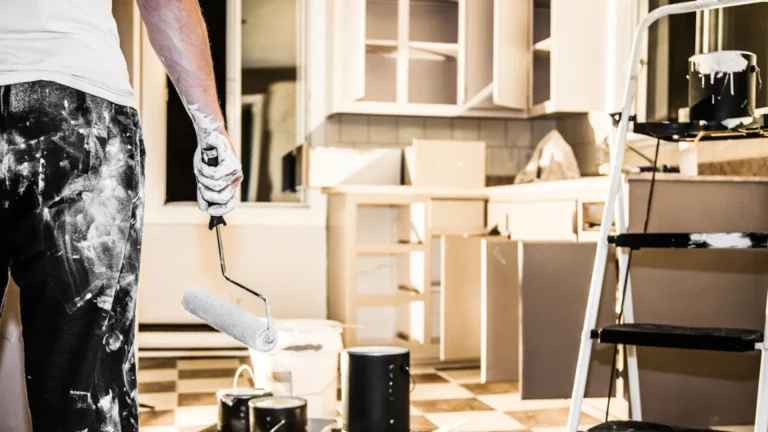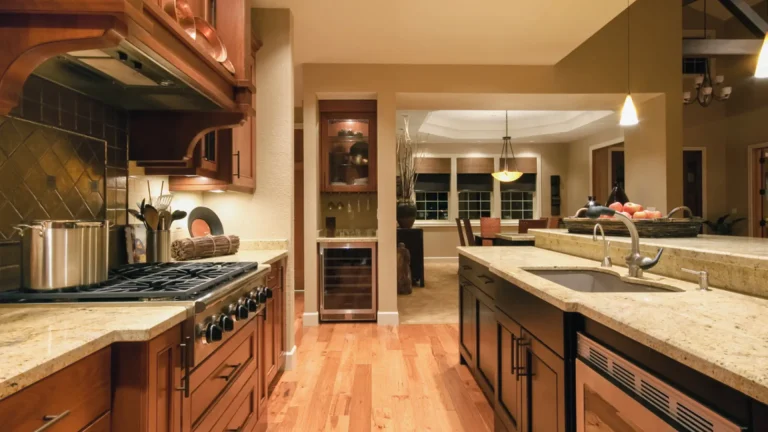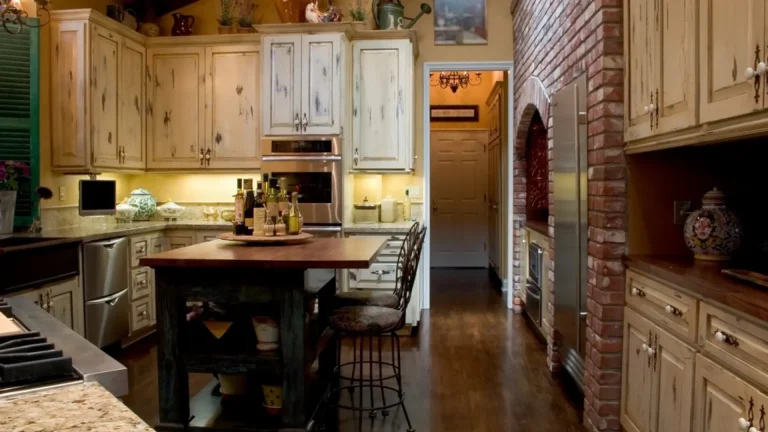Kitchen Remodeling Dilemma: Should You Install Floors or Cabinets First?
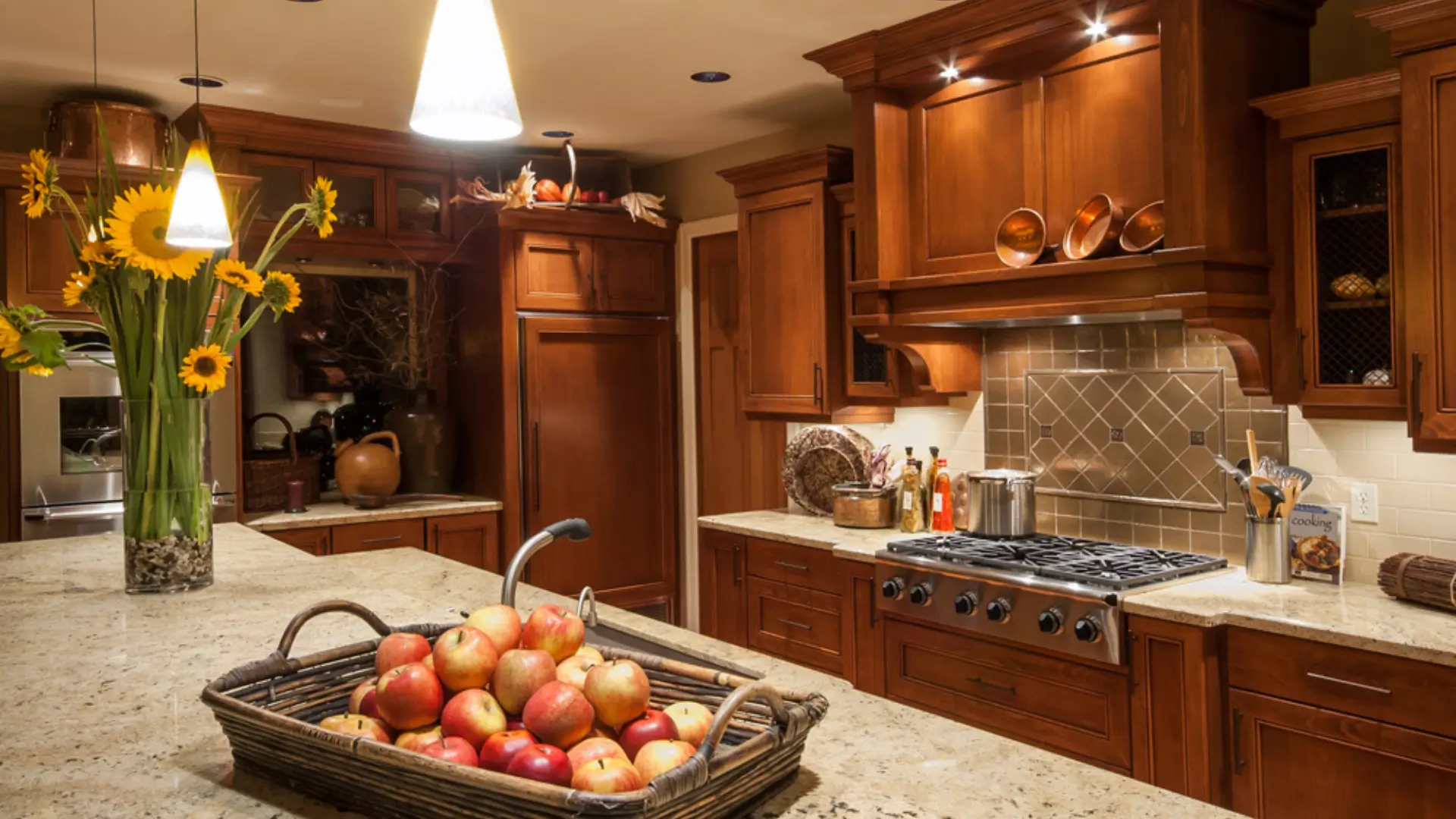
When embarking on a kitchen remodeling project, one of the key decisions homeowners face is whether to install the flooring or cabinets first. This choice can significantly impact the efficiency and outcome of the renovation. In this guide, we’ll explore the advantages of both approaches to help you make an informed decision tailored to your needs and preferences.
Why To Fit Flooring Before Cabinets?
1) Easy Installation
Installing flooring before cabinets offers several advantages that contribute to a smoother renovation process and a more aesthetically pleasing result. Firstly, it allows for easier installation. With the absence of cabinetry, flooring contractors have greater flexibility and access to work efficiently without obstacles. This can result in quicker completion times and reduced labor costs.
2) Looks Clean
Secondly, fitting flooring before cabinets creates a clean and seamless look. Without the need to cut flooring around cabinets, the final result appears more polished and visually appealing. This cohesive appearance enhances the overall design of the kitchen, providing a sense of unity and sophistication.
3) Supports Future Layout Changes
Lastly, installing flooring first supports future layout changes. By establishing the foundation with flooring, homeowners have the flexibility to rearrange or upgrade cabinetry in the future without disrupting the integrity of the flooring. This adaptability can accommodate evolving design trends and changing lifestyle needs, ensuring the longevity of your kitchen remodel.
Why To Install Cabinetry First?
1) Usually Cheaper
While fitting flooring before cabinets offers certain advantages, there are compelling reasons to consider installing cabinetry first. Firstly, it is often cheaper. By installing cabinets before flooring, homeowners can avoid the additional expenses associated with protecting or replacing flooring during the cabinet installation process. This will help in cost savings without compromising on quality.
2) Minimizes Chances of Damage
Secondly, installing cabinetry first minimizes the chances of damage to the flooring. Cabinet installation involves heavy lifting and maneuvering, which can potentially scratch or dent newly installed flooring. By completing the cabinetry installation before laying flooring, homeowners can safeguard their investment and preserve the pristine condition of the flooring surface.
3) Suits To All Flooring Types
Additionally, installing cabinetry first suits all types of flooring. Whether you opt for hardwood, laminate, vinyl, or tile, starting with cabinets ensures a secure and stable foundation for any flooring material. This versatility allows homeowners to choose their preferred flooring option without restrictions, enhancing design flexibility and customization.
Different Kitchen Flooring and When to Install Them
When deciding whether to install flooring before cabinets or vice versa, it’s essential to consider the specific characteristics and installation requirements of different flooring types.
Hardwood:
Hardwood flooring offers timeless elegance and durability, making it a popular choice for kitchens. It is recommended to install hardwood flooring before cabinets to achieve a seamless and cohesive look. Hardwood requires careful installation to prevent gaps or damage, and installing it before cabinets allows for precise fitting and expansion gaps around the perimeter.
Laminate:
Laminate flooring is a cost-effective alternative to hardwood, offering a wide range of styles and finishes. It is typically installed as a floating floor, which means it is not attached to the subfloor. While laminate can be installed before or after cabinets, many homeowners prefer to install it before for ease of installation and a consistent appearance throughout the space.
Vinyl:
Vinyl flooring is known for its versatility, durability, and water resistance, making it an ideal choice for kitchens. Vinyl can be installed either before or after cabinets, depending on personal preference and the specific installation requirements of the chosen vinyl product. However, installing vinyl before cabinets allows for a seamless transition and ensures a snug fit around the cabinetry.
Tile:
Tile flooring offers endless design possibilities and is prized for its durability and easy maintenance. When installing tile flooring in a kitchen, it is typically done before cabinets to ensure a level surface and precise placement of tiles. This approach allows for seamless transitions between rooms and ensures a professional finish.
When to Install Cabinets Before Flooring?
There are certain scenarios where installing cabinets before flooring may be preferable. For example, in cases where existing cabinetry is being replaced or retained, it may be more practical to install the new cabinets first to minimize disruption and avoid additional expenses associated with flooring removal and replacement.
When To Install Flooring Before Kitchen Cabinets?
On the other hand, installing flooring before kitchen cabinets is recommended in most remodeling projects, especially when opting for materials like hardwood or tile. This approach offers greater design flexibility, easier installation, and ensures a seamless and polished look for the finished kitchen.
Can Cabinets Go On A Floating Floor?
Yes, cabinets can be installed on a floating floor, such as laminate or vinyl plank flooring. However, it’s essential to ensure that the flooring is properly installed and sufficiently supported to bear the weight of the cabinets and countertop. Additionally, cabinets should be secured to the wall to prevent movement and maintain stability.
FAQs
Conclusion
In conclusion, the decision of whether to install flooring or cabinets first when remodeling a kitchen depends on various factors, including budget, design preferences, and practical considerations. While both approaches have their advantages, installing flooring before cabinets is generally recommended for a smoother installation process, enhanced aesthetics, and long-term flexibility.
By carefully weighing the pros and cons of each approach and considering the specific requirements of your project, you can achieve a successful kitchen remodel that meets your needs and exceeds your expectations.

